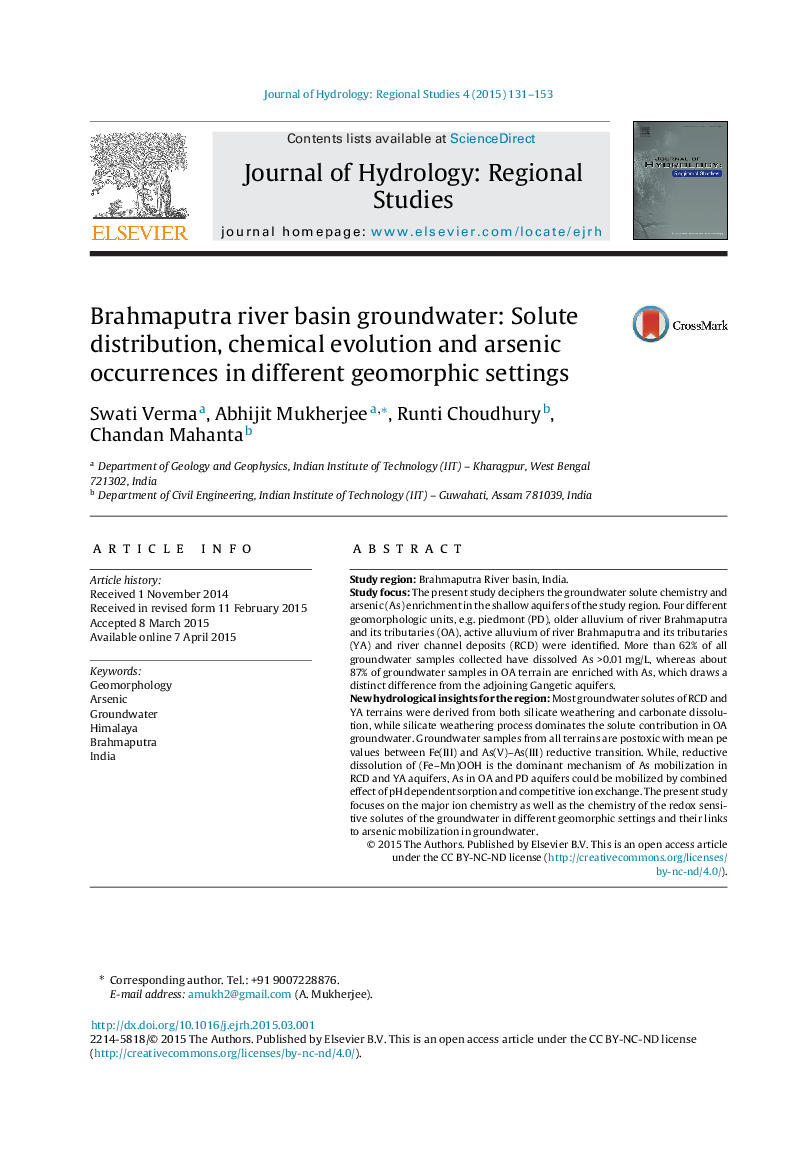| Article ID | Journal | Published Year | Pages | File Type |
|---|---|---|---|---|
| 4435350 | Journal of Hydrology: Regional Studies | 2015 | 23 Pages |
•Water–sediment interaction dominates groundwater evolution.•A model of arsenic (As) influx and mobilization in Brahmaputra river basin is proposed.•Geomorphology is hypothesized to be a major influencing factor for hydrogeochemistry.•Geomorphic terrain dependent redox processes control the arsenic content.
Study regionBrahmaputra River basin, India.Study focusThe present study deciphers the groundwater solute chemistry and arsenic (As) enrichment in the shallow aquifers of the study region. Four different geomorphologic units, e.g. piedmont (PD), older alluvium of river Brahmaputra and its tributaries (OA), active alluvium of river Brahmaputra and its tributaries (YA) and river channel deposits (RCD) were identified. More than 62% of all groundwater samples collected have dissolved As >0.01 mg/L, whereas about 87% of groundwater samples in OA terrain are enriched with As, which draws a distinct difference from the adjoining Gangetic aquifers.New hydrological insights for the regionMost groundwater solutes of RCD and YA terrains were derived from both silicate weathering and carbonate dissolution, while silicate weathering process dominates the solute contribution in OA groundwater. Groundwater samples from all terrains are postoxic with mean pe values between Fe(III) and As(V)–As(III) reductive transition. While, reductive dissolution of (Fe–Mn)OOH is the dominant mechanism of As mobilization in RCD and YA aquifers, As in OA and PD aquifers could be mobilized by combined effect of pH dependent sorption and competitive ion exchange. The present study focuses on the major ion chemistry as well as the chemistry of the redox sensitive solutes of the groundwater in different geomorphic settings and their links to arsenic mobilization in groundwater.
